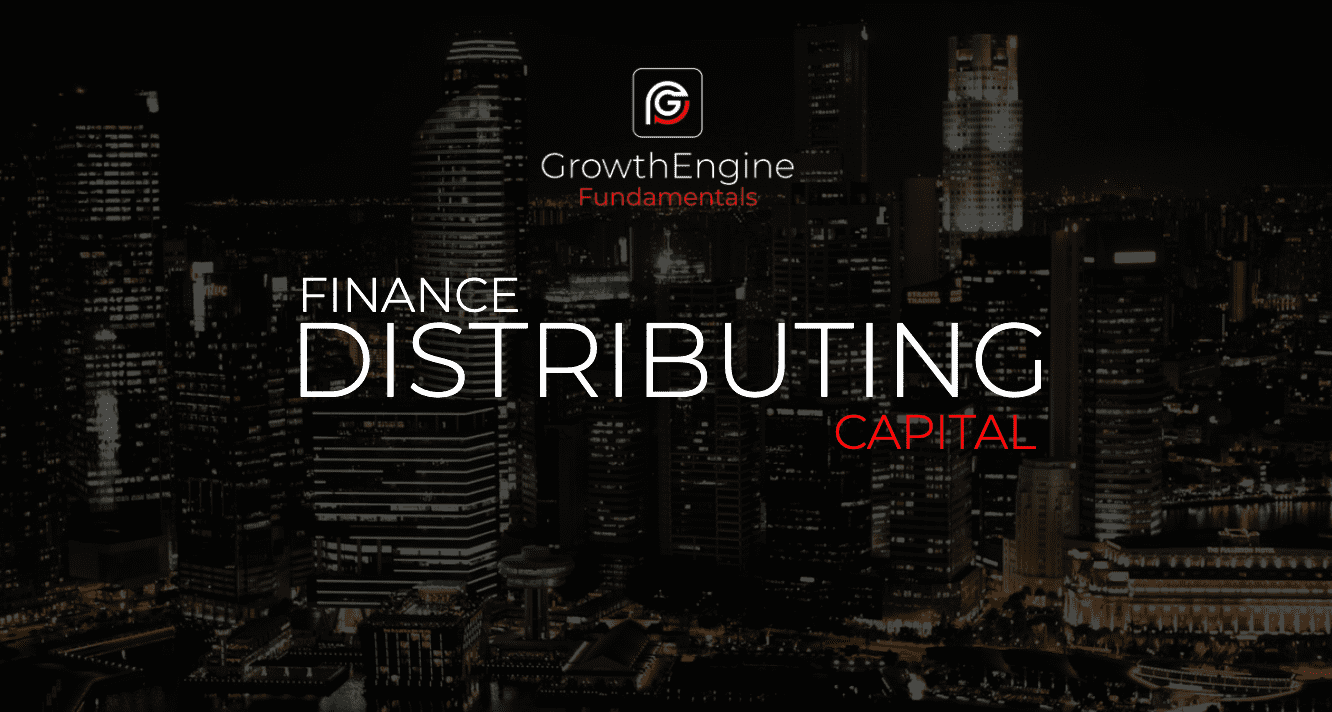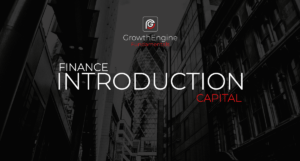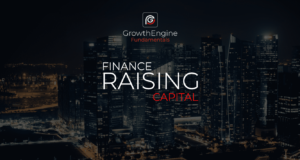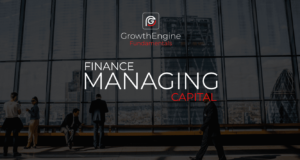
Finance Fundamentals – Distributing Capital
Introduction
Now distributing capital, we are going to be talking more about capital gains, i.e. profits.
If you think about the journey, we’ve raised or invested capital, we’ve then employed that to best use, we’ve then managed that and if we’ve done a good job, it’s more than just finger in the air and a bit of luck and ultimately the market has been kind to us.
Our strategy is well sound.
Our management was true and we should be talking about a profit at the end of the day.
So I am going to cover profits post-tax.
You will see abbreviations, EBITDA, earnings before interest, tax, depreciation and amortisation.
But I am actually talking about the bottom line.
Any depreciation that’s been taken off, any taxes being taken off.
Ultimately we’re talking about the profit, the true profit and the gains that we’ve made, whether that be in a month or a quarter or a year.
I’m going to talk yearly here just because it allows me to have a broader section than just talking what profit we made today or this week or this month.
If you consistently do that over a year, this what this is relating to.
So, there is shareholders distribution.
So at the end of the year, you’ve made let’s say half a million pounds or 100,000 pounds or 50,000 pounds.
Then the shareholders, they can say okay, we’re going to award a dividend.
You may have heard that terminology around and that depends on how many shares or what percentage and what dividends per share that you’re going to give and that’s a bit of an additional reward and that’s not a tax.
So even though we are talking profits post-tax, that’s post-tax from the corporation tax point of view.
Any dividends that you pay yourself are going to need to be taxed and your tax return or whatever it would be, so you would have to pay additional tax.
Reinvesting
So, it depends whether you have a lower or higher threshold, that percentage will apply.
Again if you’re unsure of what tax liability you’re going to need to pay off dividends, then ultimately you can have a chat with your auditor or your bookkeeper or accountant.
There are different rules around national insurance and corporate and personal taxation as well on dividends.
Again, they’ll be better suited to advise you on a deeper level.
What I would recommend is not, well direct, is not to take everything out.
If you stand still you actually go backwards.
Think about your business, your staff are going to need, pay rises, the cost of buying goods is no doubt they’re going to increase, the fuel cost to take your product to market with delivery couriers or your own transport fleet that goes up, just the general costs of living, the general operating costs of a business can be three, five, 8% more than they were last year depending on the type of model.
So don’t think oh yeah, we’ve made 100,000 pounds, we’re taking all that.
There are other things that you can use and I would highly recommend you’d have a split ratio, to distribute the capital and the profits that we’re talking about.
One is to dividends and to reward the shareholders, but reinvesting into R&D, we talked about that earlier when we were talking about employing capital.
Reinvest it in how can we make our products and services better?
How can we do that?
So I would certainly have a budget, to reinvest back into R&D and keep that constant.
You may want to use capital to buy a business.
- Maybe you’ve got a competitor or a week in the market.
- Maybe you’ve outperformed them.
- They’re a little bit nervous in the market.
- Losing customers.
- The losing staff.
- They migrate up to you or another competitor.
They may be just a good fit where you can go and buy a company, maybe they’ve got a better manufacturing plant than you.
- Maybe they’ve got a better sales team than you.
- Maybe they’ve got a better marketing team.
- Maybe they’ve got a USP they can’t manage to create with and they’re maybe weak that you could acquire them for a lower value.
So, acquiring another business or merging with another business and using capital to distribute into, the acquisition is a great way to grow and build on the baseline to really attack the market.
New verticals or market entrances.
Depends on what you’re talking about here.
If you’ve got cash and profit, you could keep doing what you’re doing and keep doing that of course and tweaking it and reinvesting it into R&D and making your market better and stronger.
Ultimately you may want to say hey, I mean this particular business as I mean, the garage says, I sell cars for a living and hey we’re wanting all the servants because it is a natural fit there.
It complements the existing sale.
You might want to go into something totally different.
If you look about us at Mike Midgley Executive, we don’t want to just build Growth Engines.
We have an executive coach and a non-exec size business that was really our original business.
The new vertical market entrance was really bringing in the inbound agency to get our customers up to the market.
But a new vertical that we’re in is growth, venture capital and raising venture funds for businesses and shaping and modelling their business to introduce the venture capitalists and we have a brand called Growth Engine Ventures that does that.
So that’s like a new vertical.
Savings
A lot of our clients are either already raised capital or wanting to raise capital on the next round of capital.
- So it makes sense for us being that venture capital early-stage angel investment venture capital market.
- So that might be a new vertical that you want to open because it compliments.
- So think about how you can distribute the capital.
If you’ve got cash, you can make more money with cash.
You might distribute it and not even put it into a high long-term savings bond or the stock market or something like that.
You might even invest it into a pre-IPO if you’re at that stage.
You’ve got growth capital in your business and you want to go through into IPO, you should probably be offering to float your business.
You might want to distribute it into driving that forward because that’s going to create a bigger return investment.
So have a look at it.

There’s no sales pitch from us.
One of our Growth Engine inbound pro’s is going to sit down and they’re really looking at three things.
Where you’re at as a business, they’re going to learn about your business, they’re going to see if we’re really a good fit and you’ve got problems or challenges or pain points or aspirations that we can help with.
The worst thing if you come off the call, you’ll have had some free solid tips.
And then if that’s something that works well we can set up some further 45-minute sort of what we call discovery calls and meetings to really dig deep with that.
And if you want to take advantage of that, literally click the let’s talk button on this page, or you can head over to any page on https://mikejmidgley.com/ for everything.
Including details about Growth Engines and what we do from there. So that wraps up our Growth Engine Fundamentals on Introduction to Finance.
As I say to wrap, if you want to shoot over to Twitter and use #AskTheAgency or #GrowthEngine ask us any questions.
We’ll get those answered for you.
Alternatively, leave us a comment below on the blog.
If you’re watching this on the YouTube channel and want to know what the blog address is, it’s https://mikejmidgley.com/
So that’s https://mikejmidgley.com/
You can head over there and as always to Get In The Game, Go Do The Hustle, Go Make It Happen and we’ll catch up with you on a Growth Engine Fundamental real soon.
If you’d like to check out the rest of the Growth Engine finance fundamentals series, select an article below









